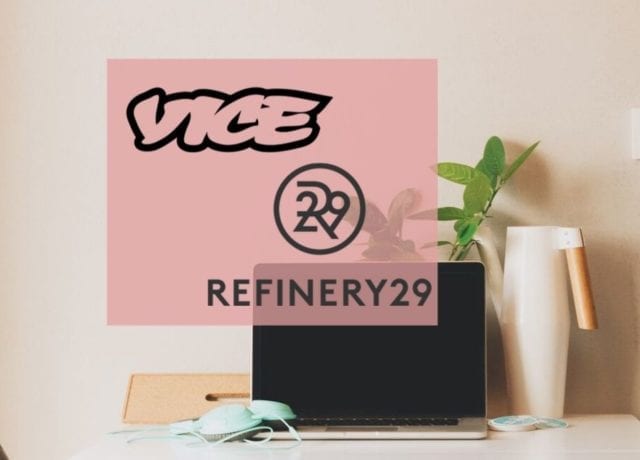Vice has acquired Refinery29 for an estimated $400 million, leaving those in and out of the industry with plenty to talk about.
Given that it creates a $4 billion company, the deal has received no small amount of attention this past week, with discussions surrounding Refinery29’s revenue streams, the distinct audiences of the two digital publications and how the deal fits within the industry on the whole.
For MediaRadar, two of the most interesting questions are: what can the acquisition mean for advertisers, and what does it mean for the metaphorical, rapidly consolidating digital advertising pie?
MediaRadar Insight: Advertisers with Vice and Refinery29
More than anything, Vice will be greatly growing their advertiser roster with the move.
Of the more than 600 companies to advertise with Refinery29 in the past year, only 19 percent were also on Vice platforms. The lack of overlap is completely unsurprising, given Refinery29’s mostly female audience and Vice’s reputation for gonzo journalism and ‘boys club’ internal culture. Distancing itself from this image may not be Vice’s primary motivation in the acquisition, but it doesn’t hurt either.
As far as industries go, Vice is gaining many new clients from the retail/apparel and accessory industries through the deal — again unsurprising given Refinery29’s audience. These two industries accounted for 40 percent of spend on Refinery29 over the past year, compared to 21 percent of the spend on Vice platforms.
Refinery29’s share of advertisers are not limited to those with a female audience, either. Besides Estee Lauder, a few of the companies that were advertising on Refinery29 but not with Vice are Target, Puma and eBay.
The Financial Times reports that the deal will boost Vice’s online reach by 17 percent, up to 350 million unique visitors each month.
What the Acquisition Means for Each Digital Brand
While it’s tempting to think of the deal in idealistic terms, the consolidation was almost certainly out of necessity. According to The New York Times, Refinery29 has been searching for buyers for at least a couple of years in the face of an increasingly tough industry. “The digital media industry is dominated by Google and Facebook, which together take more than 60 percent of online advertising revenue,” write Edmund Lee and Marc Tracy. “Last year, several media executives discussed the likelihood that they would have to join forces” at least in part to counter this heavy influence. Vice is backed by Disney and Refinery29 is backed by WarnerMedia — and the pressure to consolidate is clear.
Vice CEO Nancy Dubuc (who replaced Vice founder Shane Smith last year after the company faced backlash for its internal culture) commented directly on how the deal will strengthen the position of both publications. “As other parts of the sector consolidate, I think we have to march in long step,” Dubuc said. “We will not allow a rapidly consolidating media ecosystem to constrict young people’s choices.” She hopes that the consolidation of both publications will signal a “new era” in digital media.
The deal also gives both publications the chance to leverage the strength of the other and explore new revenue streams. Refinery29, for example, gives advertisers virtually unprecedented access to its editorial staff for branded content and is rapidly building out its events business. For its part, Vice has industry-leading content agency Virtue and has invested quite a bit into international influencers as it grows.
What remains to be seen is just how big the freshly minted media presence will become — one estimate still places the combined audience reach well behind BuzzFeed.




